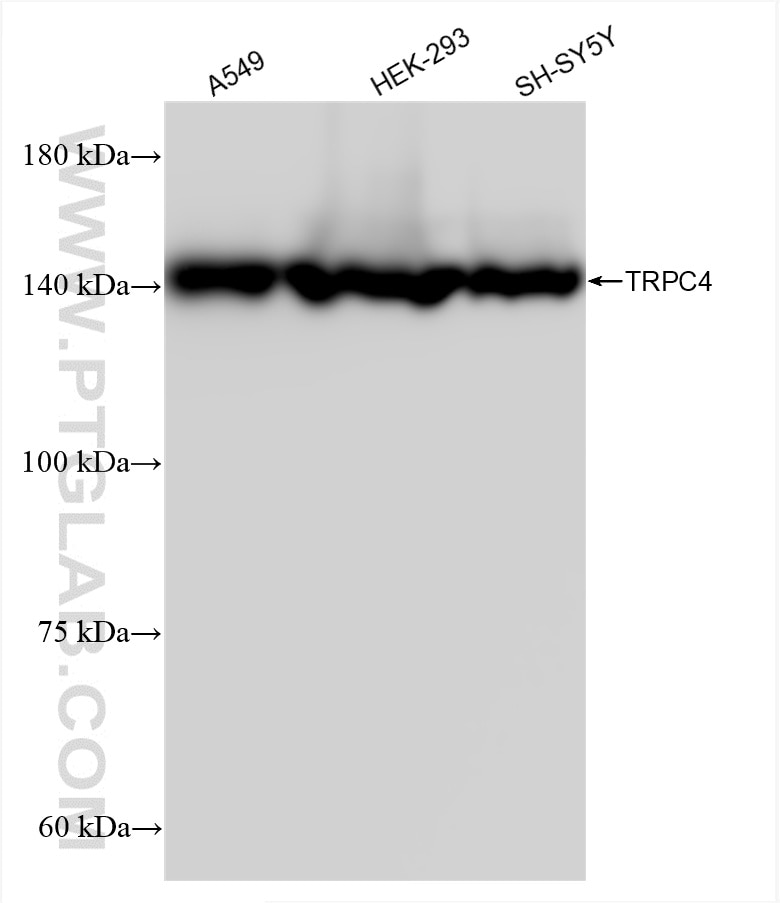Anticorps Recombinant de lapin anti-TRPC4
TRPC4 Recombinant Antibody for WB, Indirect ELISA
Hôte / Isotype
Lapin / IgG
Réactivité testée
Humain
Applications
WB, Indirect ELISA
Conjugaison
Non conjugué
CloneNo.
242444F8
N° de cat : 85334-2-PBS
Synonymes
Galerie de données de validation
Informations sur le produit
85334-2-PBS cible TRPC4 dans les applications de WB, Indirect ELISA et montre une réactivité avec des échantillons Humain
| Réactivité | Humain |
| Hôte / Isotype | Lapin / IgG |
| Clonalité | Recombinant |
| Type | Anticorps |
| Immunogène | TRPC4 Protéine recombinante Ag15698 |
| Nom complet | transient receptor potential cation channel, subfamily C, member 4 |
| Masse moléculaire calculée | 977 aa, 112 kDa |
| Poids moléculaire observé | 140 kDa |
| Numéro d’acquisition GenBank | BC104725 |
| Symbole du gène | TRPC4 |
| Identification du gène (NCBI) | 7223 |
| Conjugaison | Non conjugué |
| Forme | Liquide |
| Méthode de purification | Purification par protéine A |
| Tampon de stockage | PBS only |
| Conditions de stockage | Store at -80°C. 20ul contiennent 0,1% de BSA. |
Informations générales
TRPC4 (Transient Receptor Potential Paradigm 4) is a non-selective calcium channel protein widely found in the nervous system and cardiovascular system. TRPC4 regulates intracellular calcium levels through the activation of signaling pathways mediated by Gq/11 and Gi/o-coupled receptors, and is involved in neurotransmission, neuronal excitability, and vascular endothelial cell function. In the nervous system, TRPC4 is associated with neuropsychiatric disorders such as depression and anxiety, and its inhibitors show antidepressant and anxiolytic potential. In the cardiovascular system, TRPC4 affects vascular permeability and diastolic function by regulating calcium ion inward flow and plays an important role in hypoxia-induced pulmonary hypertension. In addition, TRPC4 is involved in thermoregulation, sensing changes in internal temperature to regulate the drop in body temperature. aberrant expression of TRPC4 is associated with a variety of diseases, making it a potential therapeutic target!



